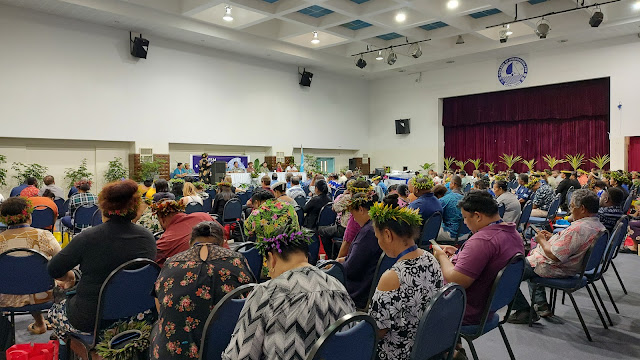Health and tackling the rising tide of NCDs
I wandered in near the end of a panel presentation at the national health summit. I was only there to pick up a participant in the summit. As I waited I heard the challenges of deciding where to focus health sector funding and efforts - whether to focus limited funding on primary care, tertiary care. or nutrition to tackle the rising Non-Communicable Disease crisis.
Since attending health meetings over two decades ago I never hear the need to promote and fund aerobic exercise, the single most effective long term NCD prevention strategy. Twenty years of speakers calling for nutrition education and training more nutritionists has not stemmed the rising tide of NCDs. Nutrition is obviously important but has not been a solution.
The complication is that exercising in public is culturally problematic for many here. Including my culturally traditional wife. After twenty years of encouraging her to workout, ten years ago she began working out: at an indoor fitness center. She was never comfortable walking outside in public. She wanted to engage in physical fitness but needed the infrastructure to support that desire. That is going to be the case for many women here, and is also the case for many of our elders and community leaders. Public exercise as seen in other nations is not seen here.
Indoor fitness facilities are crucial to addressing the NCD crisis. I know, I sound crazy, but the health sector should be pushing to get indoor fitness centers built. Give people indoor, enclosed spaces to work out, build programs around those centers, and better health outcomes will result.
Years ago in a conversation with the then director of a health insurance provider I suggested investing some of their resources in physical fitness programs. The insurance provider was dealing with the increasing costs of patient referrals abroad for advanced treatment of NCDs, costs that were pushing premiums ever higher. The director simply said that such programs were not medical matters. Prevention of illness was not a part of their mission, only paying to try to restore health after someone fell ill. I gathered that the director had not understood the old proverb that an ounce of prevention is worth a pound of cure.
A panelist at the summitt noted that during his tenure he had lost four of his team members. He looked out at the audience and said that those who are in health care positions need to set a better example. He explained that health care professionals cannot say one thing and then do another. I had the same reaction when I came into the session: many of the people charged with taking care of the health of their nations are themselves unhealthy, primarily connected to being overweight or obese. Everyone in the room can undoubtedly give a presentation on a healthy diet and the value of maintaining a healthy weight. There is a disconnect when someone who is overweight or obese is presenting on the need to maintain a healthy weight. And I do not fault those who have excess weight: diets are known not to work and may make the situation worse by increasing the metabolic set point.
Some organizations and entities sponsor "biggest loser" programs, most of which focus on diet. The biggest loser programs on television, however, focus on physical fitness. One of the shows was built around a walk-to-run program. Diet was a factor, but a secondary factor. The professionals know that aerobic exercise is the path to a healthier body.
I suspect that once you get people into a physical fitness program, participants may start paying attention to the "fuel" they put into their bodies. I suspect that physical fitness is what leads to making better choices at meal time, and not the other way around. Start with exercise and the good results will follow. Start with nutrition and diet, and repeat the previous decades of failure to turn around the NCD situation.
There is a commercial incentive in the pharmaceutical industry to develop a pill that instantly solves whatever problem one is trying to solve. There is a pill for NCDs, but that pill does not come from the pharmaceutical industry. The pill takes 30 minutes a day - which is one of the problems with the pill. And like any prescription, one has to stay on the prescription. For life. That is what makes this medicine a hard sell. But this pill works to reduce weight, prevent adult onset diabetes, reduce the risk of developing a number of types of cancer, combats high blood pressure, and appears to help reduce the risk of dementia in the later years of life. That pill is 30 minutes of aerobic exercise.
As I sat at the back I realized that if you took the whole conference outside and made them run two miles, a significant percentage would have to be taken to the hospitals that they run and staff. I am reminded of one doctor here who told me that at 43 he was too old to engage in vigorous exercise. At the time I was older than him. And I am still running. At 64.




Comments
Post a Comment